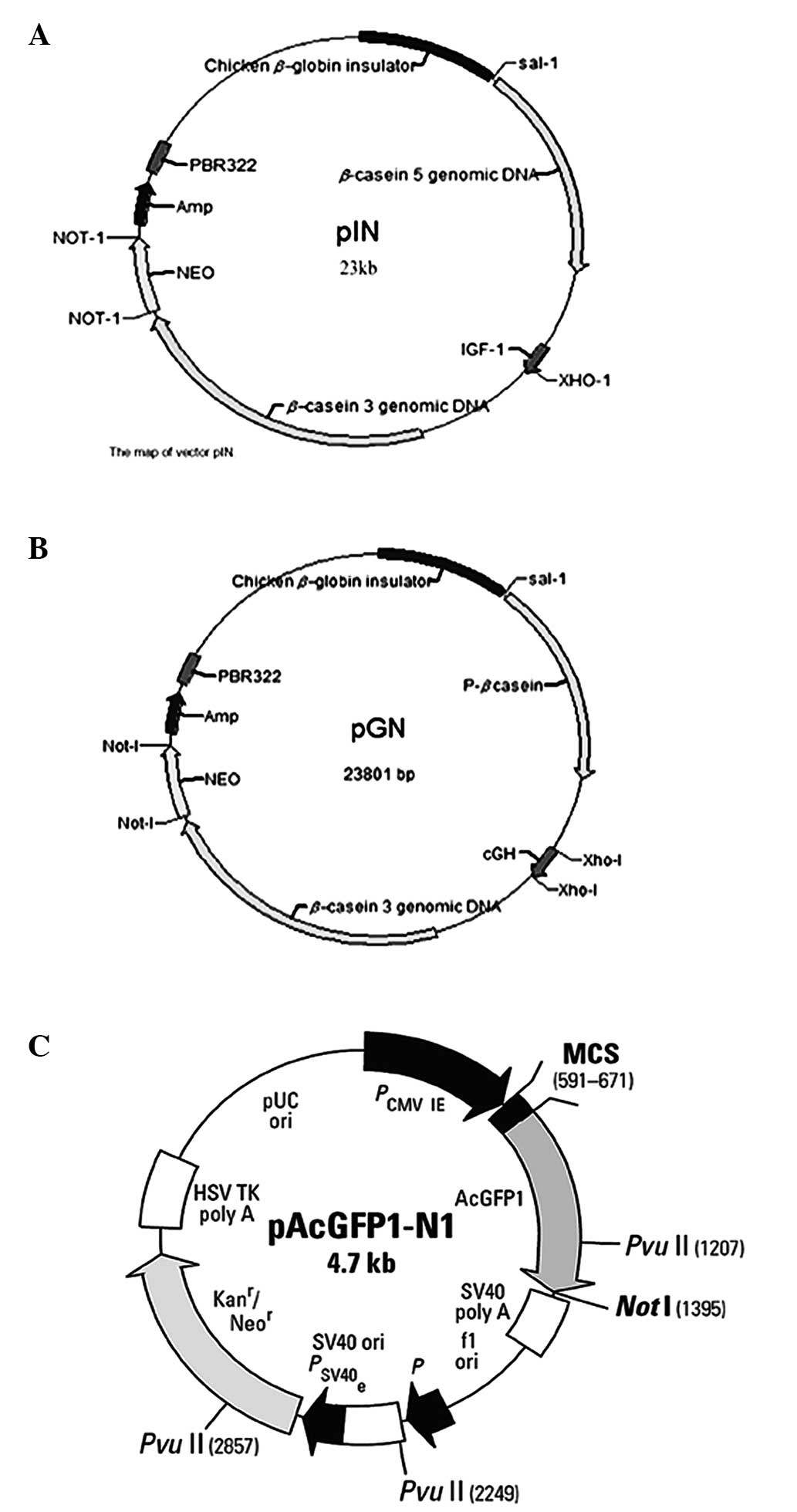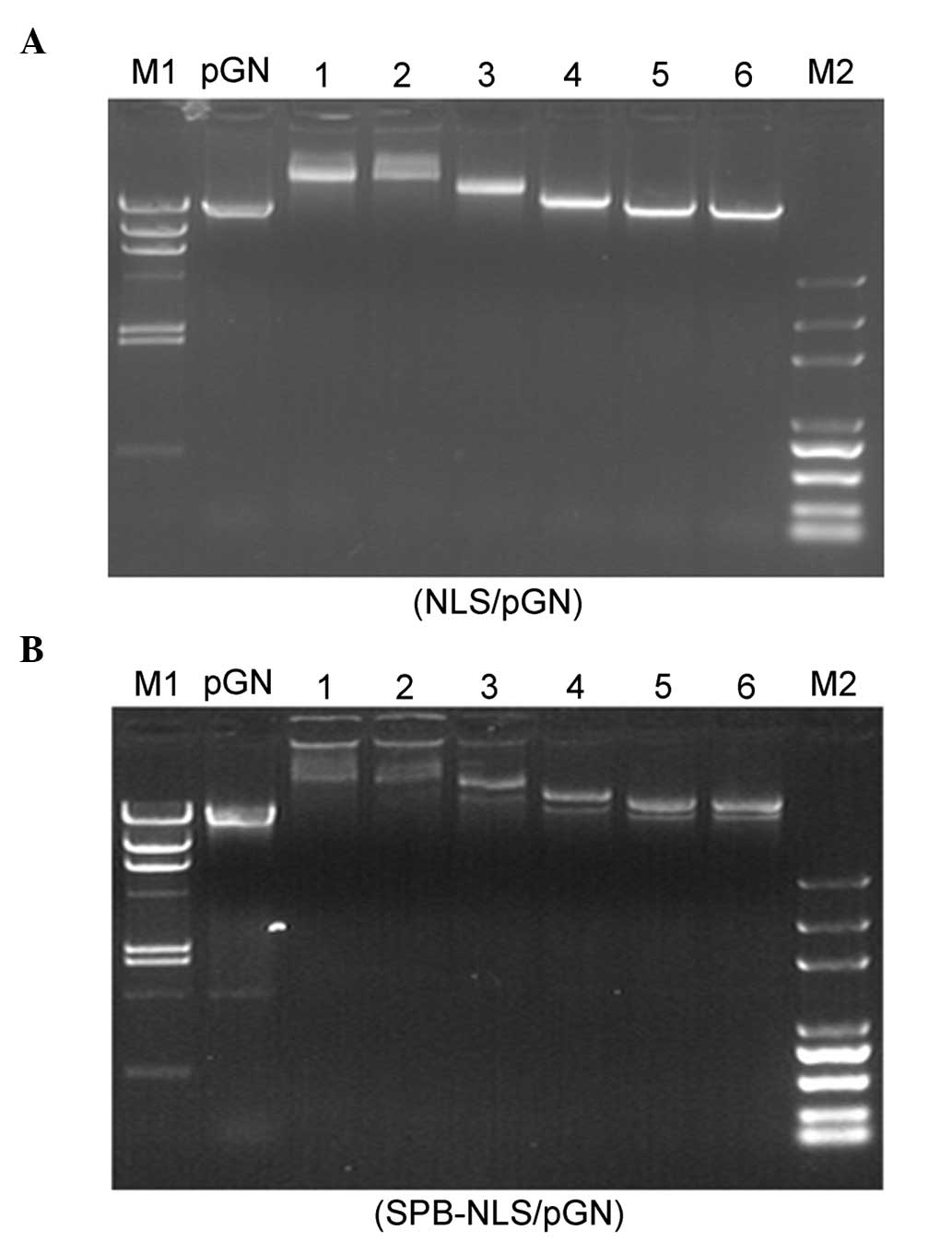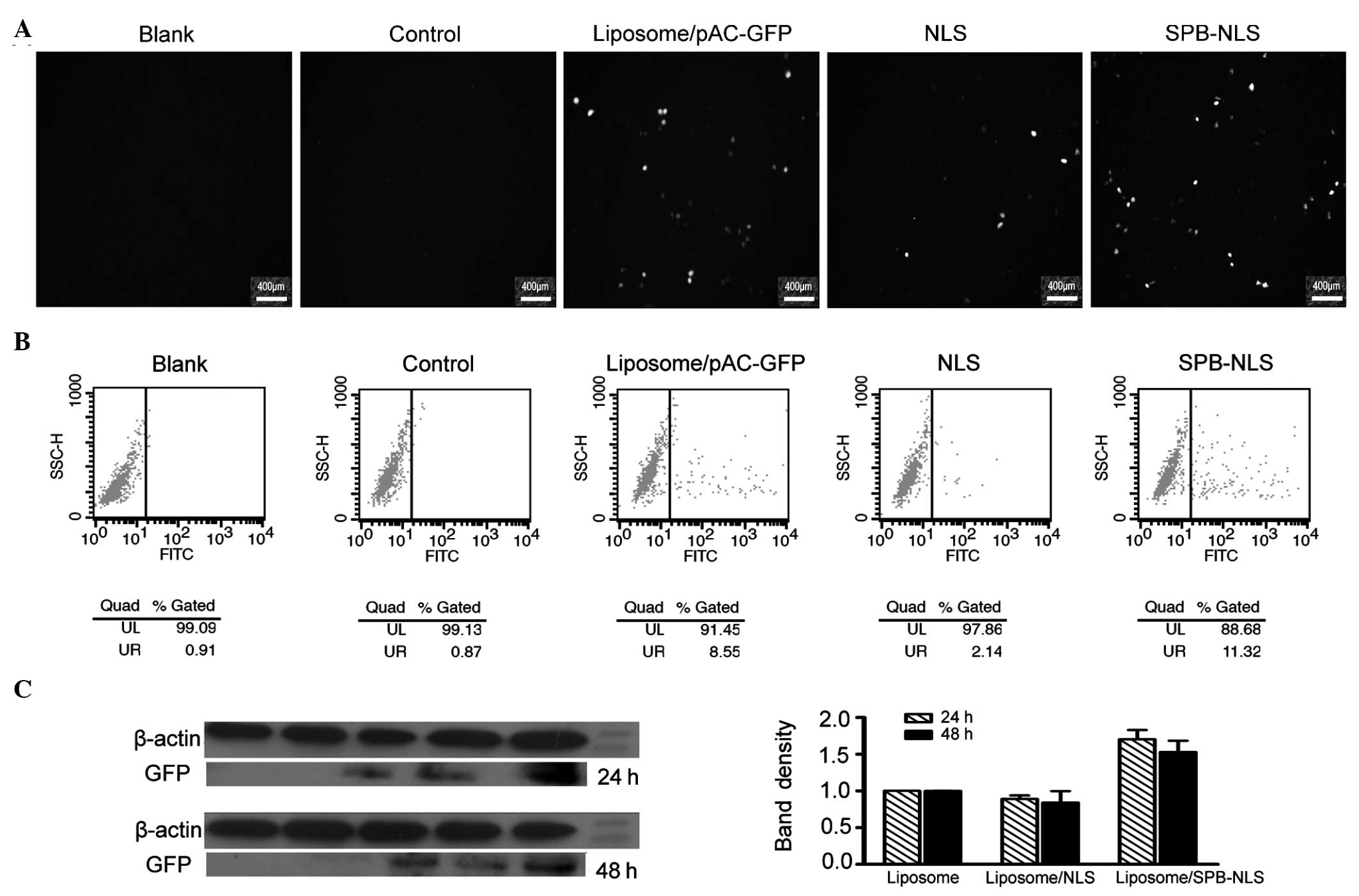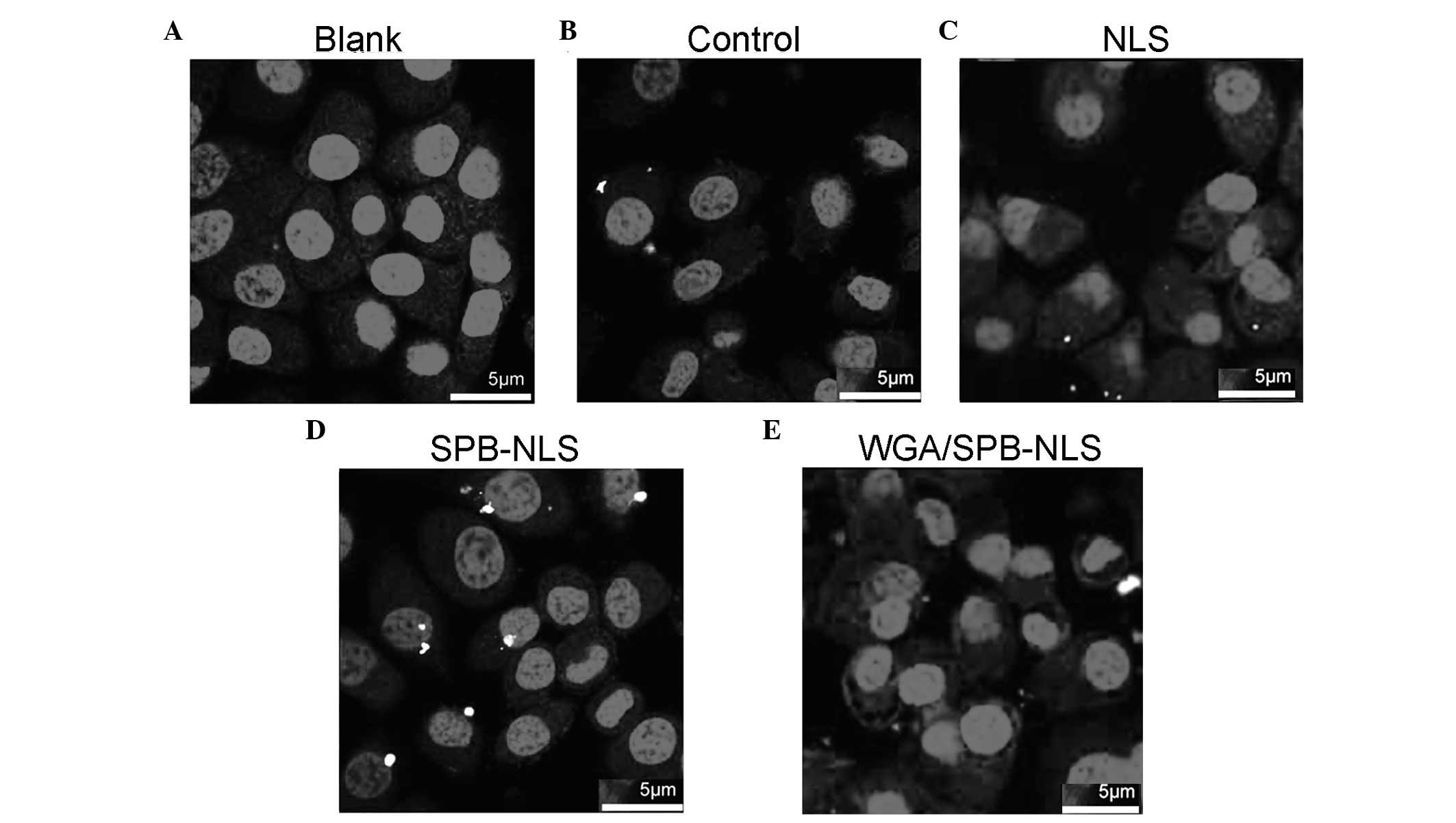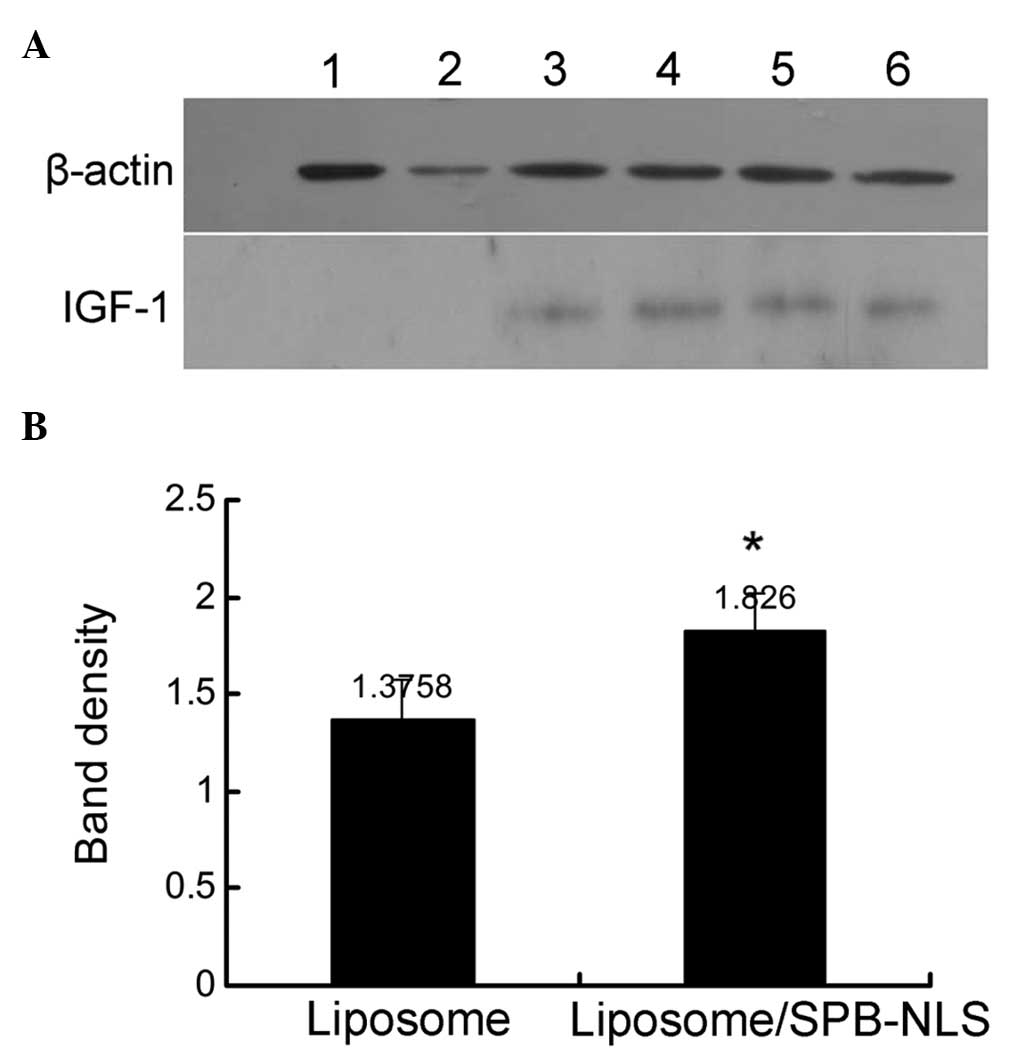|
1
|
Whitelaw CB, Farini E and Webster J: The
changing role of cell culture in the generation of transgenic
livestock. Cytotechnology. 31:3–8. 1999. View Article : Google Scholar : PubMed/NCBI
|
|
2
|
Lechardeur D and Lukacs GL: Intracellular
barriers to non-viral gene transfer. Curr Gene Ther. 2:183–194.
2002. View Article : Google Scholar : PubMed/NCBI
|
|
3
|
Leong KW, Mao HQ, Truong-Le VL, Roy K,
Walsh SM and August JT: DNA-polycation nanospheres as non-viral
gene delivery vehicles. J Control Release. 53:183–193. 1998.
View Article : Google Scholar : PubMed/NCBI
|
|
4
|
Ludtke JJ, Sebestyén MG and Wolff JA: The
effect of cell division on the cellular dynamics of microinjected
DNA and dextran. Mol Ther. 1:579–588. 2002. View Article : Google Scholar : PubMed/NCBI
|
|
5
|
Munkonge FM, Dean DA, Hillery E,
Griesenbach U and Alton EW: Emerging significance of plasmid DNA
nuclear import in gene therapy. Adv Drug Deliv Rev. 55:749–760.
2003. View Article : Google Scholar : PubMed/NCBI
|
|
6
|
Kamiya H, Tsuchiya H, Yamazaki J and
Harashima H: Intracellular trafficking and transgene expression of
viral and non-viral gene vectors. Adv Drug Deliv Rev. 52:153–164.
2001. View Article : Google Scholar : PubMed/NCBI
|
|
7
|
Zanta MA, Belguise-Valladier P and Behr
JP: Gene delivery: a single nuclear localization signal peptide is
sufficient to carry DNA to the cell nucleus. Proc Natl Acad Sci
USA. 96:91–96. 1999. View Article : Google Scholar : PubMed/NCBI
|
|
8
|
Subramanian A, Ranganathan P and Diamond
SL: Nuclear targeting peptide scaffolds for lipofection of
nondividing mammalian cells. Nat Biotechnol. 17:873–877. 1999.
View Article : Google Scholar : PubMed/NCBI
|
|
9
|
Brandén LJ, Mohamed AJ and Smith CI: A
peptide nucleic acid-nuclear localization signal fusion that
mediates nuclear transport of DNA. Nat Biotechnol. 17:784–787.
1999.PubMed/NCBI
|
|
10
|
Tanimoto M, Kamiya H, Minakawa N, Matsuda
A and Harashima H: No enhancement of nuclear entry by direct
conjugation of a nuclear localization signal peptide to linearized
DNA. Bioconjug Chem. 14:1197–1202. 2003. View Article : Google Scholar : PubMed/NCBI
|
|
11
|
Man N, Yu L, Zheng F, Li Y and Wen LP:
Efficient gene transfer to rat fetal osteoblastic cells by
synthetic peptide vector system. Protein Pept Lett. 16:368–372.
2009. View Article : Google Scholar : PubMed/NCBI
|
|
12
|
Smith J, Guidry J and Wittung-Stafshede P:
Novel ‘three-in-one’ peptide device for genetic drug delivery.
Protein Pept Lett. 10:1–7. 2003.
|
|
13
|
Lin J, Yu Q, Zhang Q and Yang Q:
Construction of mammary gland specific expression plasmid pIN and
its expression in vitro and in vivo. Afr J Biotechnol.
11:7038–7045. 2012.
|
|
14
|
Hu H, Wang J, Bu D, et al: In vitro
culture and characterization of a mammary epithelial cell line from
Chinese Holstein dairy cow. PLoS One. 4:e76362009. View Article : Google Scholar : PubMed/NCBI
|
|
15
|
Gasiorowski JZ and Dean DA: Mechanisms of
nuclear transport and interventions. Adv Drug Deliv Rev.
55:703–716. 2003. View Article : Google Scholar : PubMed/NCBI
|
|
16
|
Ludtke JJ, Zhang G, Sebestyén MG and Wolff
JA: A nuclear localization signal can enhance both the nuclear
transport and expression of 1 kb DNA. J Cell Sci. 112:2033–2041.
1999.PubMed/NCBI
|
|
17
|
Sebestyén F, Szendrei G, Mák M, et al:
Coloured peptides: synthesis, properties and use in preparation of
peptide sub-library kits. J Pept Sci. 4:294–299. 1998.PubMed/NCBI
|
|
18
|
Wildeman AG: Regulation of SV40 early gene
expression. Biochem Cell Biol. 66:567–577. 1988. View Article : Google Scholar : PubMed/NCBI
|
|
19
|
Akita H, Tanimoto M, Masuda T, et al:
Evaluation of the nuclear delivery and intra-nuclear transcription
of plasmid DNA condensed with micro (mu) and NLS-micro by
cytoplasmic and nuclear microinjection: a comparative study with
poly-L-lysine. J Gene Med. 8:198–206. 2006. View Article : Google Scholar : PubMed/NCBI
|
|
20
|
Díaz-Mochón JJ, Bialy L, Watson J,
Sánchez-Martín RM and Bradley M: Synthesis and cellular uptake of
cell delivering PNA-peptide conjugates. Chem Commun (Camb).
3316–3318. 2005.PubMed/NCBI
|
|
21
|
Leahy P, Carmichael GG and Rossomando EF:
Novel biotinylated plasmid expression vectors retain biological
function and can bind streptavidin. Bioconjug Chem. 7:545–551.
1996. View Article : Google Scholar : PubMed/NCBI
|
|
22
|
Ciolina C, Byk G, Blanche F, Thuillier V,
Scherman D and Wils P: Coupling of nuclear localization signals to
plasmid DNA and specific interaction of the conjugates with
importin alpha. Bioconjug Chem. 10:49–55. 1999. View Article : Google Scholar : PubMed/NCBI
|
|
23
|
Boulanger C, Di Giorgio C and Vierling P:
Synthesis of acridine-nuclear localization signal (NLS) conjugates
and evaluation of their impact on lipoplex and polyplex-based
transfection. Eur J Med Chem. 40:1295–1306. 2005. View Article : Google Scholar : PubMed/NCBI
|
|
24
|
Grosse S, Thévenot G, Monsigny M and Fajac
I: Which mechanism for nuclear import of plasmid DNA complexed with
polyethylenimine derivatives? J Gene Med. 8:845–851. 2006.
View Article : Google Scholar : PubMed/NCBI
|
|
25
|
Jain PT and Gewirtz DA: Enhancement of
liposomal gene delivery in human breast cancer cells by dimethyl
sulfoxide. Int J Mol Med. 1:609–611. 1998.PubMed/NCBI
|
|
26
|
Braun K, von Brasch L, Pipkorn R, et al:
BioShuttle-mediated plasmid transfer. Int J Med Sci. 4:267–277.
2007. View Article : Google Scholar
|
|
27
|
Mehier-Humbert S, Bettinger T, Yan F and
Guy RH: Ultrasound-mediated gene delivery: kinetics of plasmid
internalization and gene expression. J Control Release.
104:203–211. 2005. View Article : Google Scholar : PubMed/NCBI
|
|
28
|
Zhou M, Liu H, Xu X, et al: Identification
of nuclear localization signal that governs nuclear import of BRD7
and its essential roles in inhibiting cell cycle progression. J
Cell Biochem. 98:920–930. 2006. View Article : Google Scholar : PubMed/NCBI
|
|
29
|
Cereghini S and Yaniv M: Assembly of
transfected DNA into chromatin: structural changes in the
origin-promoter-enhancer region upon replication. EMBO J.
3:1243–1253. 1984.PubMed/NCBI
|



